Please can you introduce yourself and your professional background?
Randy Hulet:
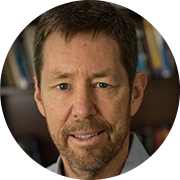 I am a Professor of Physics at Rice University, with degrees in Physics from Stanford and MIT. My field of research, in broad terms, is experimental atomic physics. We helped to develop techniques for cooling and trapping atoms that were useful for producing a Bose-Einstein condensate of an atomic gas at micro-Kelvin temperatures. Most recently, our interests have focused on ultra-cold atoms confined to one-dimensional (1D) “wires” formed with laser beams. We use these methods for quantum simulation of electronic materials, where atoms mimic the behavior of the electrons.
I am a Professor of Physics at Rice University, with degrees in Physics from Stanford and MIT. My field of research, in broad terms, is experimental atomic physics. We helped to develop techniques for cooling and trapping atoms that were useful for producing a Bose-Einstein condensate of an atomic gas at micro-Kelvin temperatures. Most recently, our interests have focused on ultra-cold atoms confined to one-dimensional (1D) “wires” formed with laser beams. We use these methods for quantum simulation of electronic materials, where atoms mimic the behavior of the electrons.
Han Pu:
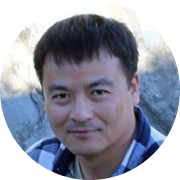 I am a Professor of Physics at Rice University, with a Ph.D. in Physics from the University of Rochester. My field of research is theoretical atomic physics. More specifically, I am interested in the fundamental properties of atoms at very low temperatures. At such a temperature regime, the behaviors of atoms are governed by the laws of quantum mechanics.
I am a Professor of Physics at Rice University, with a Ph.D. in Physics from the University of Rochester. My field of research is theoretical atomic physics. More specifically, I am interested in the fundamental properties of atoms at very low temperatures. At such a temperature regime, the behaviors of atoms are governed by the laws of quantum mechanics.
Ruwan Senaratne:
 I am a Research Scientist in Randy’s lab at Rice University. I have degrees from Harvard University and the University of California, Santa Barbara, where I was part of a team conducting experiments studying strongly driven quantum systems using Bose-Einstein condensates composed of ultracold neutral atoms. For the past few years, I have worked with Randy’s team on studying fermionic atoms in one dimension.
I am a Research Scientist in Randy’s lab at Rice University. I have degrees from Harvard University and the University of California, Santa Barbara, where I was part of a team conducting experiments studying strongly driven quantum systems using Bose-Einstein condensates composed of ultracold neutral atoms. For the past few years, I have worked with Randy’s team on studying fermionic atoms in one dimension.
Danyel Cavazos:
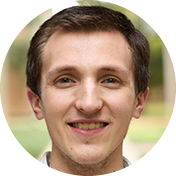 I am a Ph.D. candidate in Randy’s lab at Rice University. I completed my bachelor’s degree in engineering physics at Tecnológico de Monterrey in Mexico in 2016, where I was working on advanced studies of materials using X-ray diffraction. I joined Randy’s team in 2017, and since then I have been working on experiments related to ultracold fermionic atoms in optical lattices.
I am a Ph.D. candidate in Randy’s lab at Rice University. I completed my bachelor’s degree in engineering physics at Tecnológico de Monterrey in Mexico in 2016, where I was working on advanced studies of materials using X-ray diffraction. I joined Randy’s team in 2017, and since then I have been working on experiments related to ultracold fermionic atoms in optical lattices.
Can you explain what spin-charge separation is?
Han: Electrons possess electric charge and also an intrinsic form of the angular momentum (different from the orbital angular momentum which originates from motion) called spin. Charge and spin are two fundamental properties of electrons. In a single electron, one cannot separate its charge from its spin.
When an ensemble of electrons is confined in one dimension (1D), due to the interaction between them, a small perturbation will cause excitations propagating like waves, just like a small pebble thrown into a pond will cause water waves. What is remarkable is that these excitation waves in 1D electronic systems can carry either spin or charge, and the two types of waves propagate independently with different velocities. This phenomenon is called spin-charge separation.
What are some of the challenges in observing spin-charge separation and how did you overcome these?
Ruwan: The initial search for spin-charge separation occurred in the field of solid-state physics. This makes sense, as the problem that Tomonaga and Luttinger were independently studying was that of electrons in a one-dimensional wire. So experimentalists developed techniques to build quasi-1D wires out of, for example, semiconductors or carbon nanotubes.
The initial wave of results in observing signatures of spin-charge separation around two decades ago were from such experiments. These experiments, while ground-breaking, had several limitations. The complex electronic structure of a solid and the unavoidable presence of defects and disorder in the material made interpretation of the solid-state results challenging. In addition, there is not a straightforward way in such systems to turn on and off the repulsive interactions between the electrons, which really is critical to showing the presence and absence of spin-charge separation.
Around the same time, people started being able to cool neutral atoms down to sufficiently low temperatures to observe the types of collective quantum behavior known as many-body physics. These ultracold atoms could be trapped using lasers in an “optical lattice” which emulates the periodic structure of a crystalline lattice. And thus, the field of quantum simulation of many-body physics using ultracold atoms was born.
The cold atoms play the role of electrons in the crystalline lattice. These systems are in general easier to characterize and tune than their solid-state cousins and are effectively disorder-free. There also is the unique ability to tune the interactions between the atoms; it’s possible to make the atom strongly attracted to each other or strongly repulsed from each other, or completely indifferent to one another.
These ingredients laid the stage for performing a quantum simulation of the Tomonaga-Luttinger model using ultracold atoms, which we did. The key experimental technique we developed was the ability to initiate a spin wave, which had previously been impossible without effectively destroying the sample. By using an ultraviolet laser, we were able to impart oppositely directed forces on the two different spin states in a sufficiently non-destructive way in order to excite the spin wave.
What happens when electrons travel through a 1D wire?
Han: In higher dimensions, when an electron gets pushed, it may travel in a direction where there are no other electrons nearby. This, however, is not possible in 1D where all electrons are confined along a line. When one electron is pushed, it pushes on the one next to it, and it pushes on the one next to it, and so on. Hence excitations in 1D are necessarily collective in nature. These collective excitations propagate in the form of density waves: a compression and refraction of electron density.
These density waves form the new fundamental modes of a 1D electronic system. In a single electron, charge and spin cannot be separated. This, however, is in general no longer the case in the collective density waves. The spin and charge become two separate entities that move independently as they form the spin and charge density waves.
Hence, when an electron travels through a 1D wire, it dissolves into a spin part and a charge part. Now, this should not be understood as a single electron splitting into two parts, but rather it becomes a part of these collective waves. This spin-charge separation is a clear demonstration of the strangeness of quantum mechanics.
How can this phenomenon be utilized by quantum computers?
Randy: That turns out to be a very interesting question. Usually, we deal with just two kinds of particles: bosons and fermions. When two identical bosons are swapped, one for the other, the two-particle quantum state describing them remains the same as before the swap. Fermions, on the other hand, acquire a sign change upon a swap.
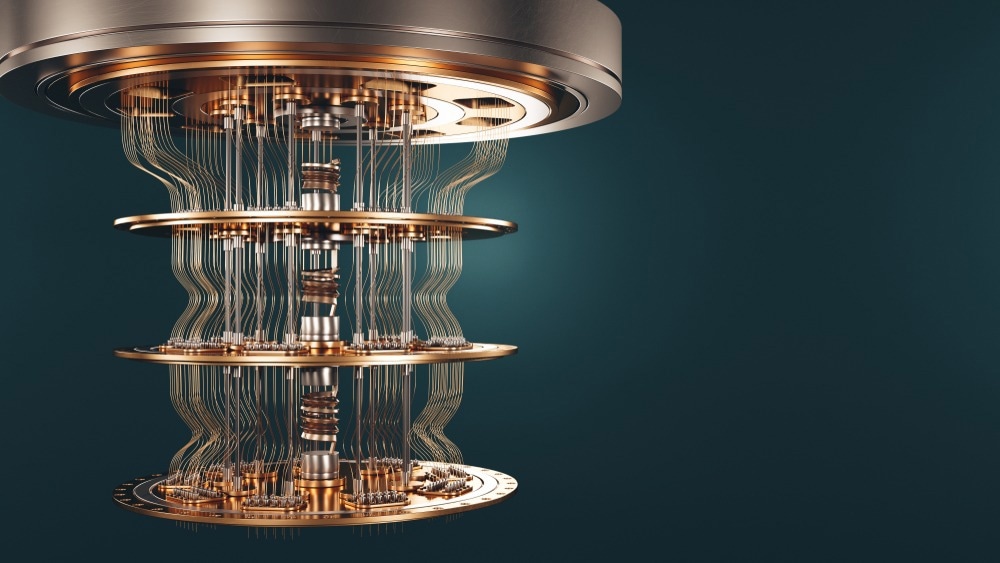
Image Credit: Bartlomiej K. Wroblewski/Shutterstock.com
Fermions include the building blocks of matter: protons, neutrons, and electrons. While most microscopic-scale particles, such as atoms and molecules, are either bosons or fermions, it turns out that under certain circumstances, a many-electron gas may form disconnected pairs of “Majorana fermions”, with exchange statistics that are neither +1 (bosons) or -1 (fermions), but rather an imaginary number.
Because conventional qubits are usually constructed from localized quantum matter, such as atoms, quantum dots, and superconducting junctions, to name a few examples, they are prone to local noise that causes them to lose their phase coherence. On the other hand, Majorana fermions are spatially separated, making them extremely robust to local noise and attractive candidates for fault-tolerant quantum computing.
Our experiment is relevant because one of the proposed places where Majorana fermions would show up is at the ends of a superconducting wire, similar to the wires that we are learning about.
Could you describe your 1D simulator and how it was developed?
Randy: We built an apparatus, funded about 10 years ago by DARPA, specifically to study atomic fermions on a lattice. Fermions are a relevant choice for these experiments because we are interested in resolving some of the puzzles associated with strongly correlated materials, especially the high-temperature superconductors, which are not well-understood.
The lattice in our experiment, called an optical lattice, is formed from interfering laser beams. By retroreflecting a laser beam you create a standing wave of light. Two orthogonal standing waves can produce a bundle of 1D tubes that atoms can move through. This realization of a 1D geometry has proven to be an extremely effective way to study 1D physics in a very well-defined setting, in which parameters such as the interaction strength between particles, their density, and temperature may all be tuned.
Spin Wave Animation
This animation shows spin waves propagating through an antiferromagnetic material, in which neighboring atoms (balls) have opposite spins (arrows). When a photon, or light particle (gold ball), of the right wavelength hits an atom and perturbs its spin, the disturbance spreads like ripples in water. These spin waves can be detected with a technique called RIXS, which analyzes the energy and momentum of photons emitted by the disturbed material. Video Credit: SLAC National Accelerator Laboratory, Neutrons4Science
After using our quantum simulator to measure the phase diagram of a 1D spin-imbalanced (i.e., more up-spins than down) Fermi gas, we simulated the 3D Hubbard model and detected anti-ferromagnetic correlations. About five years ago, we set out to study spin-charge separation in 1D.
Why is it important to run these kinds of quantum operations in ultra-cold temperatures?
Danyel: Although the phenomenon that we studied is striking, it is also very subtle. We are talking about being able to distinguish excitations propagating through only a few thousands of atoms. We need our initial system to be as close as possible to the ground state while also keeping it isolated from noise and perturbations. Keeping the atoms in the ultra-cold temperature regime helps us achieve that goal. The excitations we observed would get obscured if there was a lot of thermal noise present in the system.
This might sound a little surprising, but studying that scenario is exactly one of the follow-up research projects we are pursuing right now. We are heating up our samples and observing when the spin-charge separation goes away. This is interesting for us because if we can fully predict when the spin-charge separation will appear and when it will vanish, then that gives us confidence that our understanding of this phenomenon is sound.
Why did you choose to use lithium atoms as a stand-in for electrons in your research?
Danyel: Lithium belongs to the alkali metals family. These elements, with their single valence electron, have principle excitation wavelengths in the near-ir region of the electromagnetic spectrum--where solid-state lasers work well-- making them very convenient for their use in laser cooling, imaging, and optical pumping. In particular, lithium has both a bosonic isotope, ⁷Li, and a fermionic one, ⁶Li, which are both stable. Given that electrons are fermions, this makes ⁶Li a really good candidate for simulating them.
What were the significant findings that you uncovered regarding systems like this?
Ruwan: To the best of our knowledge, this is the first experiment of any kind to confirm the role of interactions in spin-charge separation. By tuning between a regime where the atoms are non-interacting to one where they are strongly repulsive, we were able to tune from a system with no spin-charge separation to one that is clearly spin-charge separated.
Additionally, we were able to measure the velocities of the spin and charge waves and compare their behavior to the results of exact calculations at zero temperature. Lastly, we observed key deviations from the simplest formulation of the Tomonaga-Luttinger model, in which certain approximations are made in order to make the mathematics more elegant and tractable.
During the course of conducting the study, was there anything that surprised or shocked you and the team?
Ruwan: I think what surprised me personally the most is that spin and charge do not behave in a completely symmetric way. In Tomonaga-Luttinger liquid (TLL) theory, the equations that govern the motion of spin and charge waves have the same form. The difference between the two waves is encapsulated in the difference in their speeds. However, it turns out that there is a scattering process (called back-scattering) that only affects the spin sector and in fact disrupts the usual TLL formulation at non-zero temperature.
We were able to see this difference, and our theoretical team was able to provide us with some modeling of this process. This is an active area of theoretical research, so it was gratifying to make an experimental contribution toward this end.
Are there any limitations that are yet to be overcome to progress this research?
Randy: The limitation imposed by decoherence is the primary effect limiting the ability to scale up the number of qubits in a quantum computer. Decoherence means that the quantum state representing a qubit loses phase information eventually, mainly because of connections to the environment.
I mentioned earlier that theorists have proposed making qubits with Majorana fermions because these would be topologically protected from decoherence. One scheme to make Majorana fermions is to confine electrons (or atoms) in 1D superconducting wires. The superconductor, however, is required to have p-wave pairing symmetry. Few superconductors, if any, have this exotic property, yet it may be possible to make a p-wave superconductor with cold atoms using a p-wave interaction potential. We and other groups are exploring p-wave pairing with atomic fermions, but so far the p-wave interactions have provoked the loss of atoms from recombination collisions. If we can resolve this problem, the path to Majorana fermions with atoms seems clear.
Ruwan: In our experiment, there is residual density variation of the atoms, both along the quasi-1D guides and between multiple guides. A more homogeneous and colder sample would allow for a sharper signal. We were also prevented from going to an even stronger repulsion between the atoms because they then try to lower their energy by forming molecules.
In addition, geometric considerations on our apparatus have prevented us from exciting much higher momentum spin and charge waves that could be used to probe outside the TLL regime. On the theoretical side, it remains a challenge to calculate the properties of the excitations at non-zero temperatures.
There are also many avenues of possible further study. For example, so far, we have limited ourselves to repulsive interactions between the atoms, but this experiment could also be performed with attractive interactions. For these conditions, we expect the atoms to “pair”, much like electrons in a superconductor.
Randy: I also want to emphasize the importance of a strong experimental/theoretical collaboration to the outcome of this project. While we performed the experiment at Rice University, the group of Prof Xiwen Guan in Wuhan performed state-of-the-art calculations to extract the velocity of the spin and density waves. Through their work, we realized the importance of the non-linear backscattering effect for the spin-wave, as discussed by Ruwan above.
Where can readers find more information?
Interview questions written by Robert Lea
About the Authors
Professor Randy Hulet
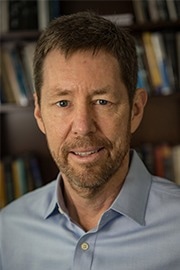 Hulet is known for important contributions to atomic physics, including for his role in the development of laser cooling and trapping of atoms. His most important achievements are the first realization of Bose-Einstein condensation in an atomic gas with attractive interactions, the characterization of matter-wave solitons, the creation of a degenerate Fermi gas and the exploration of the BEC-BCS crossover, and to the field of quantum simulation with ultracold atoms, including the observation of antiferromagnetic order in the Fermi-Hubbard model, and for definitive measurements of spin-charge separation in a one-dimensional Fermi gas.
Hulet is known for important contributions to atomic physics, including for his role in the development of laser cooling and trapping of atoms. His most important achievements are the first realization of Bose-Einstein condensation in an atomic gas with attractive interactions, the characterization of matter-wave solitons, the creation of a degenerate Fermi gas and the exploration of the BEC-BCS crossover, and to the field of quantum simulation with ultracold atoms, including the observation of antiferromagnetic order in the Fermi-Hubbard model, and for definitive measurements of spin-charge separation in a one-dimensional Fermi gas.
Danyel Cavazos
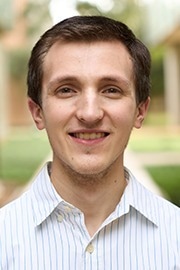 Danyel Cavazos is a Ph.D. candidate at Rice University working in experimental atomic physics. He studies the behavior of ultracold atomic fermions in optical lattices, as quantum simulations of electronic materials, especially when they are confined to reduced dimensions such as extremely narrow wires. He completed his B.S. degree in physics engineering at Tecnológico de Monterrey in Mexico.
Danyel Cavazos is a Ph.D. candidate at Rice University working in experimental atomic physics. He studies the behavior of ultracold atomic fermions in optical lattices, as quantum simulations of electronic materials, especially when they are confined to reduced dimensions such as extremely narrow wires. He completed his B.S. degree in physics engineering at Tecnológico de Monterrey in Mexico.
Outside of the lab, he is an advocate for sharing science in a clear, open-access fashion, communicating science through different media, especially illustration. He also enjoys biking, cooking, and weightlifting.
Ruwan Senaratne
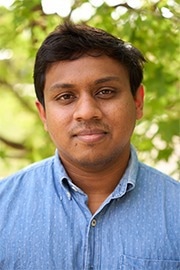 Ruwan Senaratne is a Research Scientist in Randy’s lab at Rice University. He has degrees from Harvard University and the University of California, Santa Barbara, where he was part of a team conducting experiments studying strongly driven quantum systems using Bose-Einstein condensates composed of ultracold neutral atoms.
Ruwan Senaratne is a Research Scientist in Randy’s lab at Rice University. He has degrees from Harvard University and the University of California, Santa Barbara, where he was part of a team conducting experiments studying strongly driven quantum systems using Bose-Einstein condensates composed of ultracold neutral atoms.
Professor Han Pu
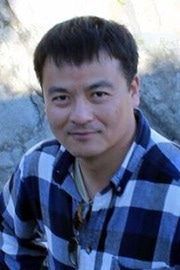 Han Pu is a Professor of Physics at Rice University with a Ph.D. in Physics from the University of Rochester. His field of research is theoretical atomic physics.
Han Pu is a Professor of Physics at Rice University with a Ph.D. in Physics from the University of Rochester. His field of research is theoretical atomic physics.
Disclaimer: The views expressed here are those of the interviewee and do not necessarily represent the views of AZoM.com Limited (T/A) AZoNetwork, the owner and operator of this website. This disclaimer forms part of the Terms and Conditions of use of this website.